Trading : 7am to 5pm (Mon-Sun)
Call Us : (03) 7071 0777
Email Us : sales@primalhunter.com.au
NEED HELP?
Hours: 7am-5pm (Mon-Sun)
Ph: (03) 7071 0777
E:sales@primalhunter.com.au

Victoria is a goldmine for kayak anglers, offering a huge variety of waters to explore—from vast inland lakes to winding estuaries and open coastal bays. Whether you're brand new to kayak fishing or a seasoned paddler with a tackle box full of stories, there’s something in this southern state for everyone.
In this guide, we’ll break down six of the best kayak fishing locations in Victoria, covering everything from what fish to target, the best seasons to go, where to launch your kayak, and what bait or lures to use. We’ve included a mix of environments—wide-open lakes, shallow estuaries, tidal rivers, and saltwater bays—to suit all skill levels and styles of fishing.
Plus, we’ve double-checked access and regulations for each spot to ensure they’re kayak-friendly and legal to fish (as of 24 April 2025). Whether you’re chasing snapper in Port Phillip Bay or flicking soft plastics for bream in Lake Tyers, you’ll find valuable info here to help you get on the water and on the fish.
Let’s dive in.

Overview:
Western Port Bay is a unique and dynamic fishery, well-known for its complex tidal system, diverse habitats, and abundance of structure. Unlike the calmer, more enclosed Port Phillip Bay, Western Port is a tidal bay with large water movement, strong currents, and an intricate network of mudflats, sandbars, mangrove-lined creeks, and reef systems.
This environment creates rich feeding grounds that attract quality fish, but it also demands respect—especially for kayak anglers. Planning around tides and understanding the geography of the bay are key to unlocking its full potential.
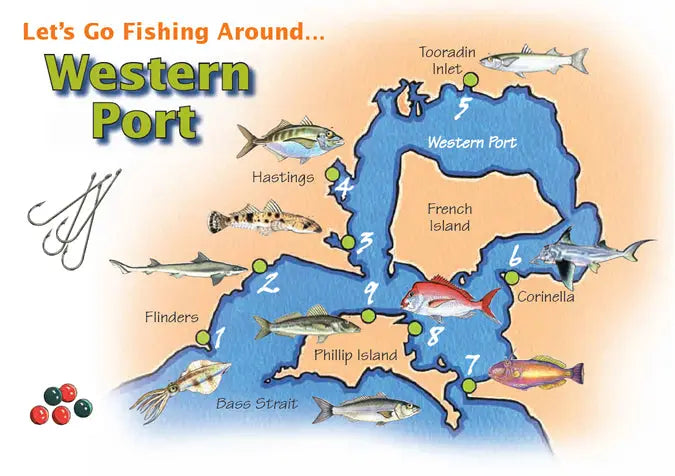
Species to Target:
Snapper
Flathead
Squid
Australian Salmon
Trevally
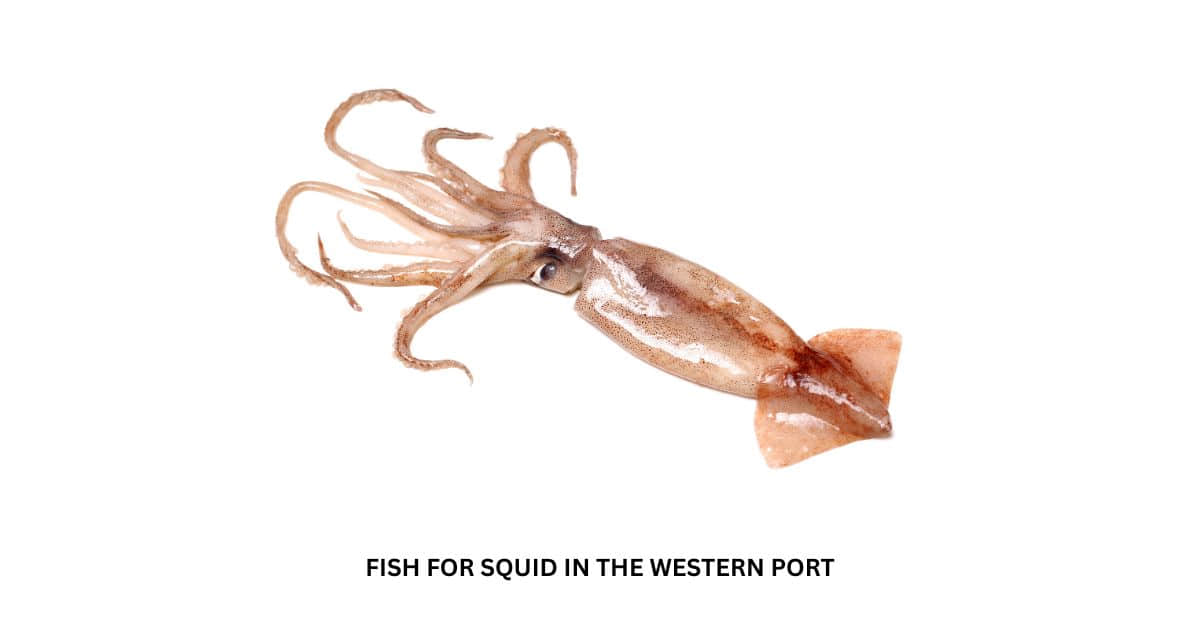
Best Seasons:
Snapper: Spring to early summer
Flathead and squid: Year-round
Salmon & Trevally – Autumn to Winter
Fishing Tips:
Tidal Tactics-
Western Port’s tides are no joke. The water can rise or fall dramatically (up to 3m in some areas), so plan your session around the tide change—this is not only safer but also when fish activity peaks.
Slack water (just before and after the tide turns) is prime time for kayak stability and fish feeding.
The run-in tide often brings in baitfish and clearer water, while the run-out tide pulls predators out of the creeks and onto the flats.
Snapper Strategies-
Focus on reef systems around Corinella, Lysaughts, and Rhyll during the early season.
Use fresh baits like pilchards, squid strips, or silver whiting on a running sinker rig.
Soft plastics like 5" jerkshads and paddle tails fished slowly along the bottom also work well in shallower areas.
Squid Hotspots-
Drop jigs over weed beds near Flinders, Ventnor, and Hastings Pier.
Size 2.5 to 3.5 squid jigs in natural or UV colours tend to perform best in clear water.
Flathead Approach-
Drift the mudflats and drop-offs using soft plastics, especially around low tide as they follow bait into shallower zones.
Use a 3"–4" paddle tail in motor oil or bloodworm colours on 1/6oz jig heads for a natural presentation.
Kayak Tech Tip:
Use a GPS/fish finder combo to mark productive ground and track depth changes—key when targeting snapper in deeper channels or squid over kelp.
Kayak Launch Points:
Point Leo
Corinella
San Remo
Stony Point

Pro Tip: Always check launch conditions, especially wind and tide flow. On big tides, stick to backwaters or sheltered bays.
Safety Considerations:
Western Port can be challenging and potentially dangerous for inexperienced paddlers due to its tidal rips and wind exposure. Here are a few must-dos:
Wear a PFD (lifejacket) at all times.
Use a bright kayak flag to remain visible to boats.
Bring a marine radio or PLB in case of emergency—mobile reception can be patchy.
Know your exit points and tide schedules before launching.
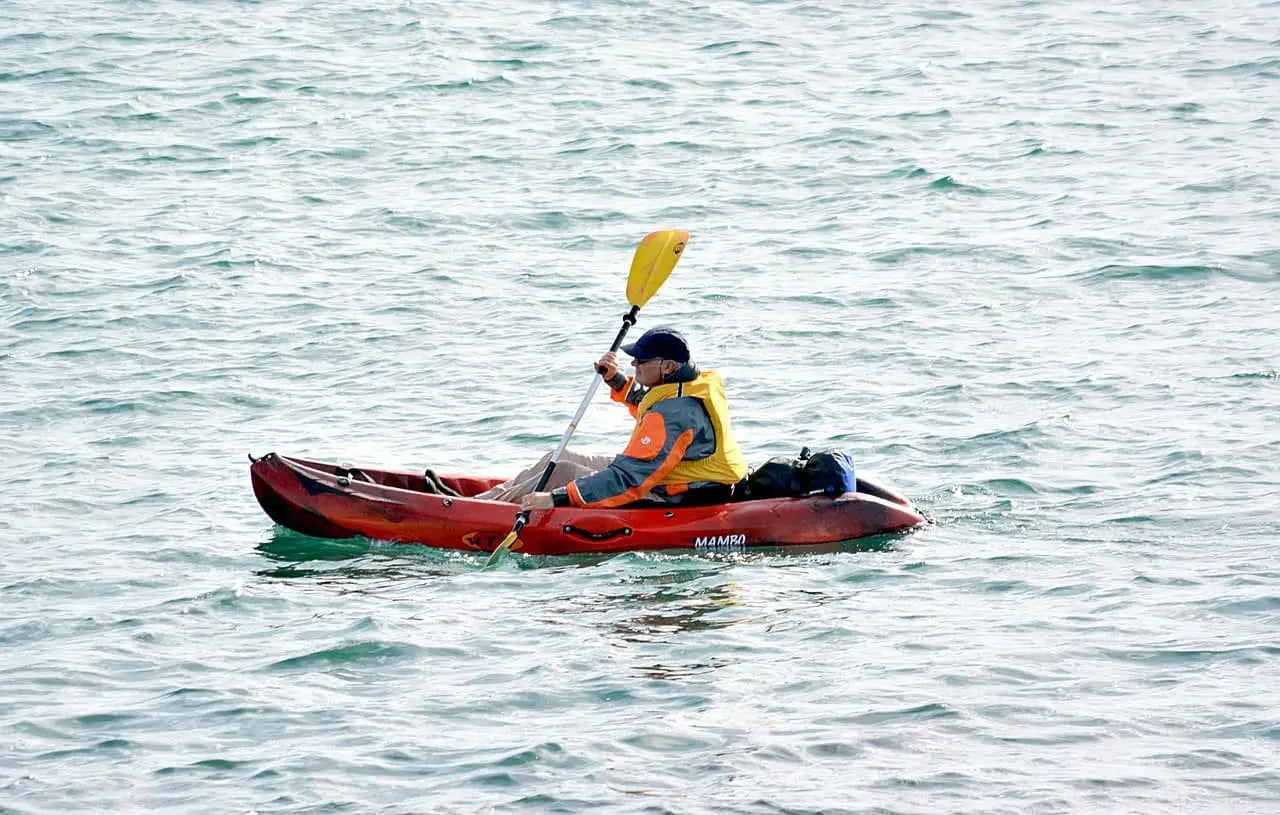
Regulations & Licencing:
You’ll need a valid Victorian Recreational Fishing Licence (unless exempt).
Pay attention to no-fish zones, marine national parks, and seasonal snapper regulations.
Keep up to date via the Victorian Fisheries Authority for size and bag limits.
Overview:
Lake Eildon is a vast, man-made reservoir in northeastern Victoria, offering over 500 kilometers of shoreline. It's a hub for various outdoor activities, including fishing. The lake features a mix of submerged timber, rocky points, and steep drop-offs, providing diverse habitats for a range of fish species.
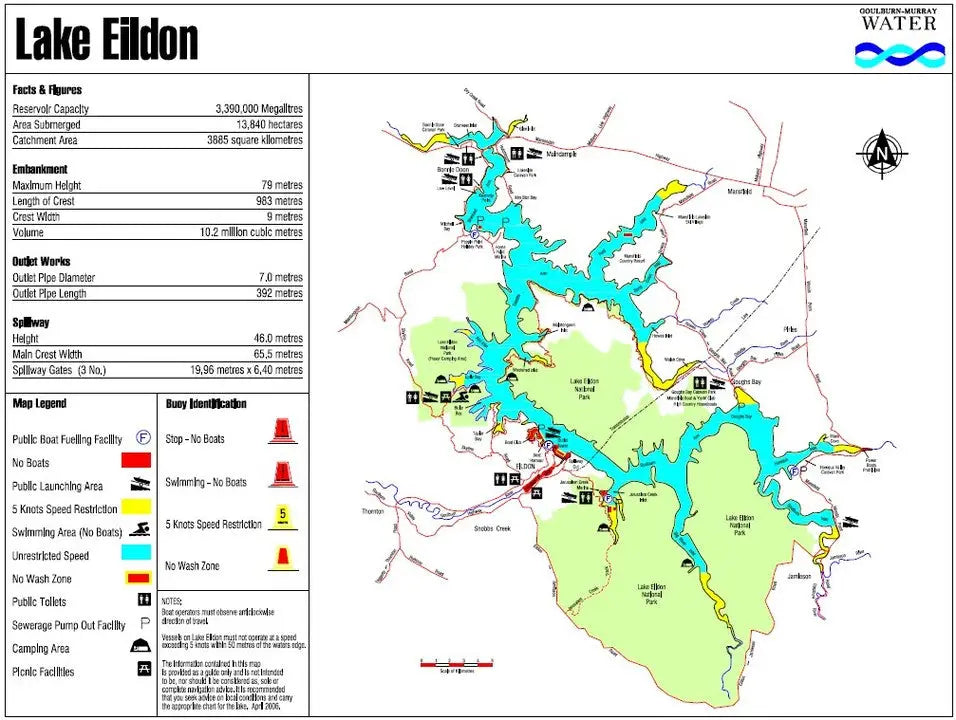
Species to Target:
Murray Cod
Yellowbelly (Golden Perch)
Redfin
Trout
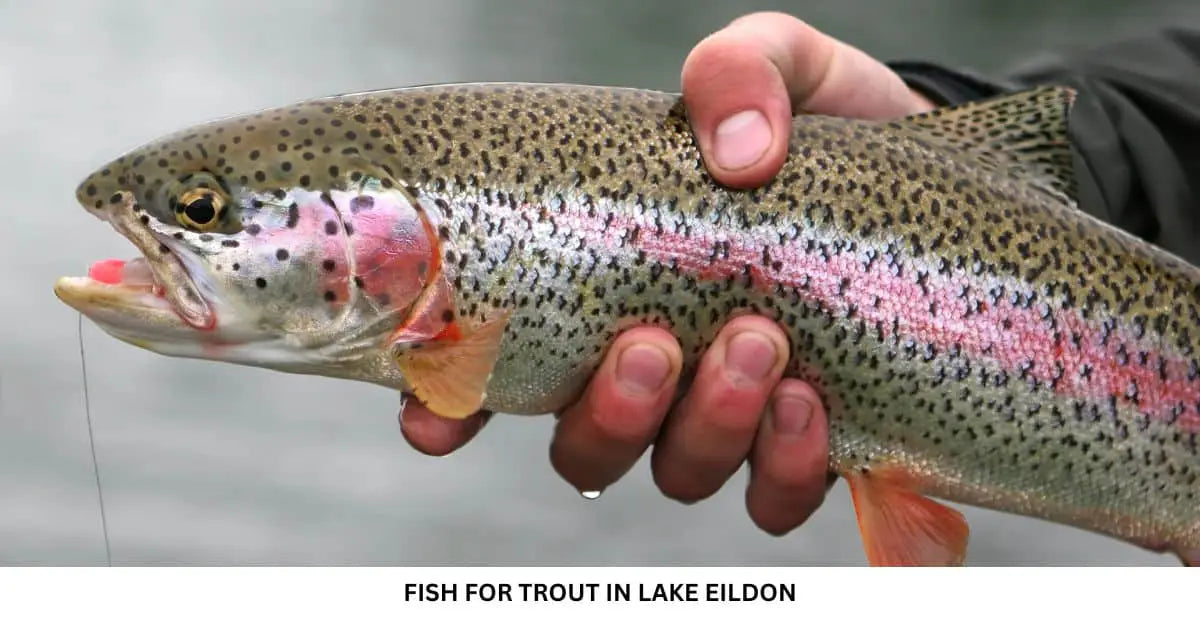
Best Seasons:
Spring to autumn
Fishing Tips:
Murray Cod Strategies-
Structure is Key: Murray cod are ambush predators. Cast spinnerbaits, surface lures, or hardbody lures close to submerged timber, rocky outcrops, and steep banks. Early morning and dusk are prime bite windows.
Trolling: Slowly troll large lures along deep edges or drop-offs. This technique helps cover water efficiently and locate active fish.
Surface Fishing: In low-light conditions or overcast days, try poppers or wakebaits near timber for explosive topwater action.
Yellowbelly (Golden Perch)-
Reaction Bites: Target them using lipless crankbaits or vibration jigs around rocky banks and tree lines. Vary the retrieve speed to trigger a strike.
Vertical Jigging: When fish are sitting deep, especially in colder months, jig soft vibes or blades vertically from your kayak.
Best Times: Late afternoon into evening as the water warms up in spring and autumn.
Redfin Techniques-
Schooling Behavior: Redfin often school up. Once you catch one, stay in the area and fish vertically with soft plastics, small vibes, or spinners.
Drop-offs and Points: These are key ambush spots. Cast and retrieve slowly near structure.
Berleying: Use a small amount of chopped worms or bread to bring them into your area.
Trout Approach-
Trolling with Tassie Devils, minnow-style lures, or rapalas works well in cooler months.
Focus around inflows and drop-offs where the water is cooler and oxygen-rich.
Safety Considerations:
Wear a PFD (lifejacket) at all times.
Be aware of submerged obstacles and varying water levels.
Check weather conditions before heading out, as the area can experience sudden changes.
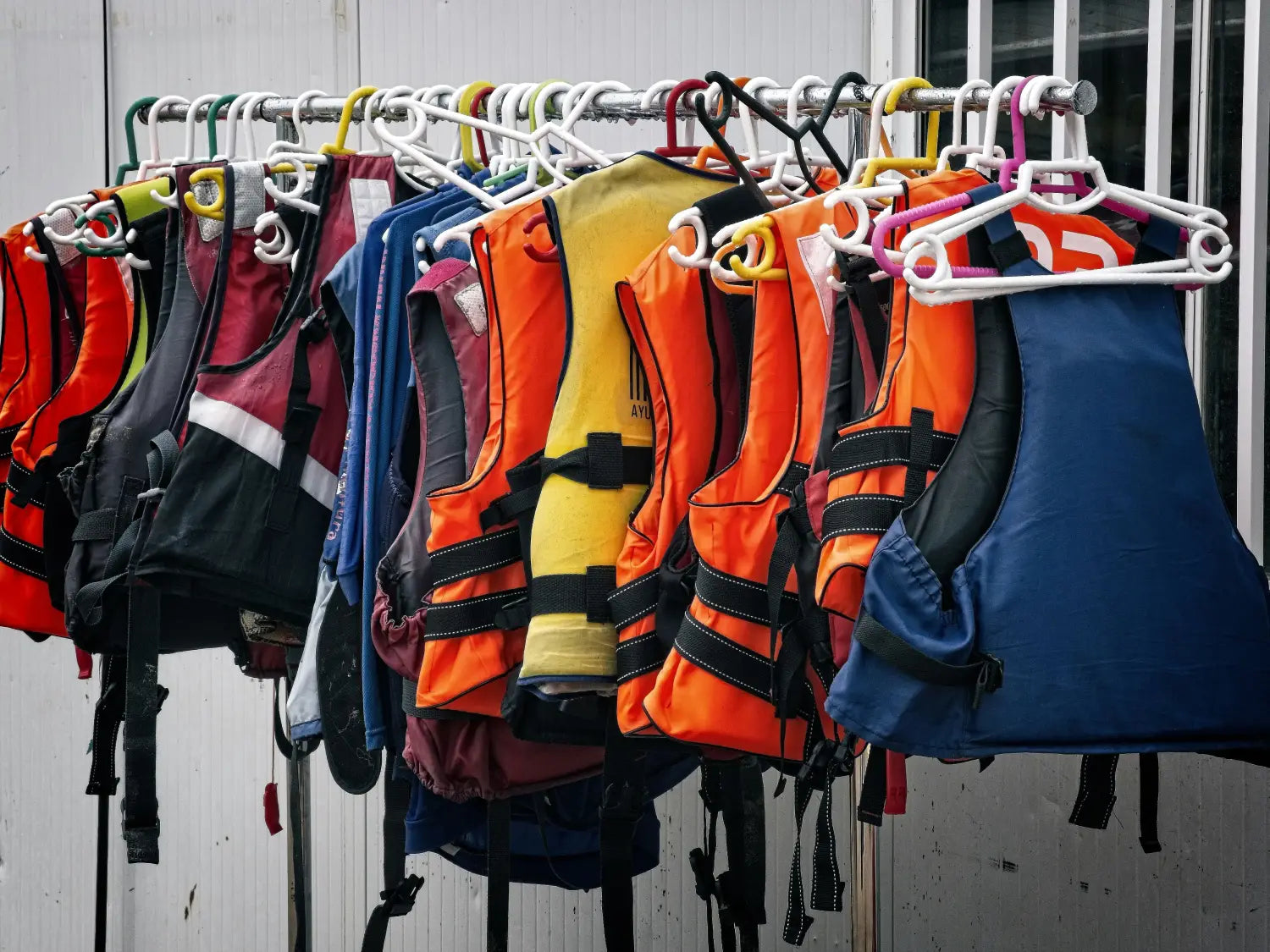
Regulations & Licencing:
A valid Victorian Recreational Fishing Licence is required unless exempt.
Check for specific bag and size limits for each species.
Overview:
Lake Tyers is a shallow estuary located in East Gippsland, known for its diverse fish species and scenic surroundings. The system includes a mix of channels, sand flats, and seagrass beds, providing ample opportunities for kayak anglers.
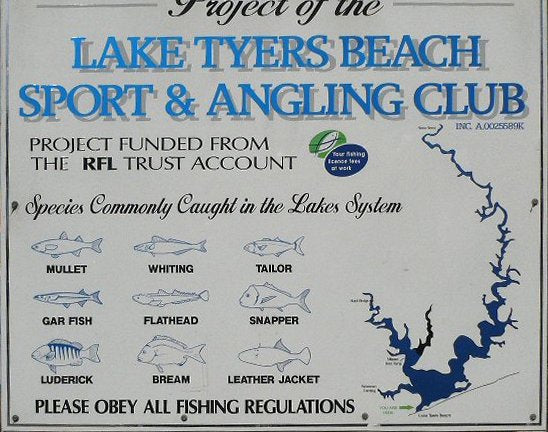
Species to Target:
Dusky Flathead
Bream
Estuary Perch
Tailor
Australian Salmon
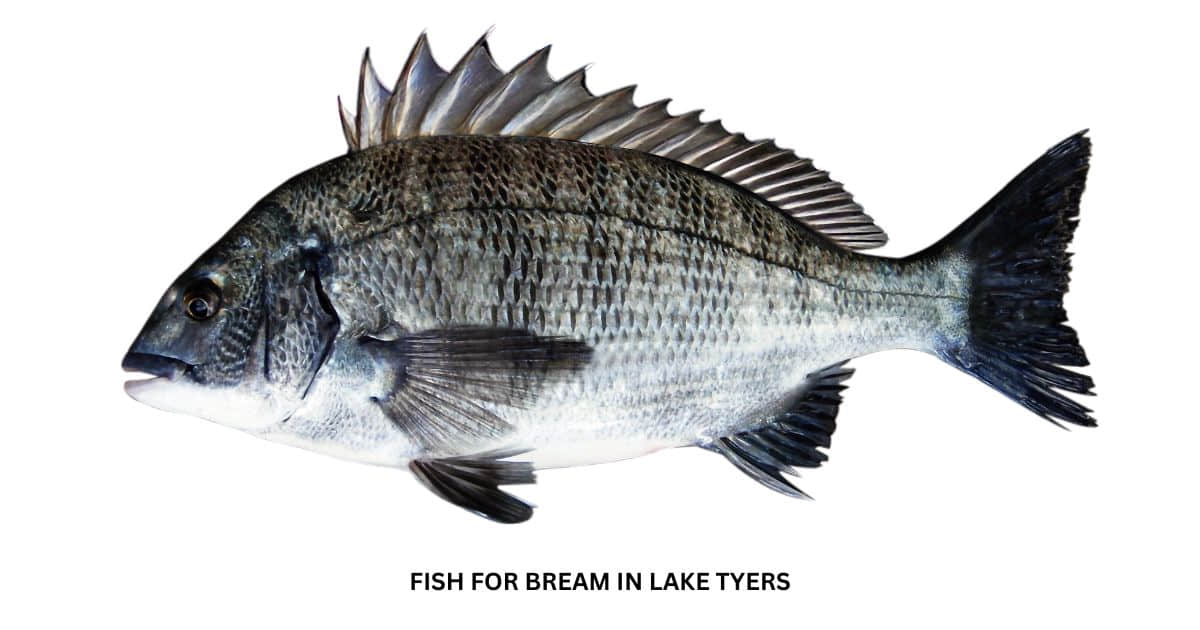
Fishing Tips:
Dusky Flathead Tactics-
Drifting with Plastics: Cover sandy flats and channels during the run-out tide. Use 3–4" paddle tails or jerkshads in bloodworm, motor oil, or UV green on 1/6–1/4oz jigheads.
Ambush Zones: Target drop-offs and weed edges, especially on the last of the outgoing tide when flathead move up to feed.
Hardbodies: Small diving minnows slowly retrieved over the flats can entice bigger fish holding in shallow water.
Bream Tactics-
Structure Hunters: Focus on submerged snags, overhanging trees, and rock walls. Bream love cover. Use lightly weighted grub-tail plastics or cranka crabs.
Surface Action: Early morning or overcast conditions are great for using surface lures (e.g., Bent Minnows, cicada imitations) over flats and snags.
Berley Lightly: Crushed mussels or prawns can help fire up the bite near your kayak.
Tailor & Salmon Blitzing-
Look for surface commotion or birds diving—signs of feeding fish.
Use metal slugs (20–40g) on a high-speed retrieve to match baitfish.
Best fished during the cooler months or windy days that push bait into bays or corners.
Estuary Perch Secrets-
Fish around deep bends, submerged timber, or bridge pylons.
Use soft plastics or suspending minnows (e.g. Jackall Squirrels, Atomic Shads).
Fish slowly—EPs are more likely to bite on a subtle twitch or long pause.
Kayak Launch Points:
Mill Point
Nowa Nowa
Fishermans Landing
Lake Tyers Beach

Safety Considerations:
Wear a PFD (lifejacket) at all times.
Be cautious of tidal changes and wind conditions.
Ensure your kayak is equipped with necessary safety gear.
Regulations & Licencing:
A valid Victorian Recreational Fishing Licence is required unless exempt.
Check for specific bag and size limits for each species.
Overview:
Mallacoota Inlet is a picturesque waterway located in East Gippsland, offering a variety of fishing opportunities in its sheltered waters. The inlet features a mix of shallow sand flats, mud flats, channels, and weed beds, making it ideal for kayak fishing.
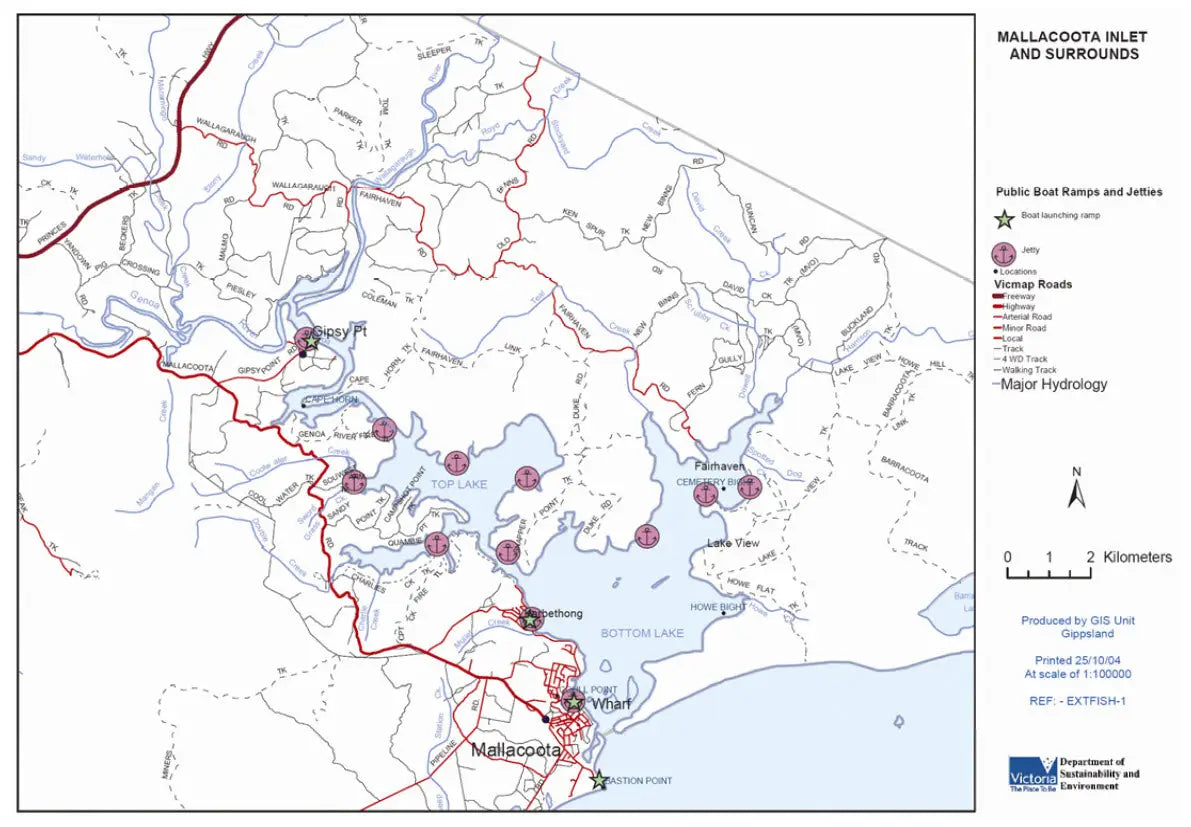
Species to Target:
Bream
Flathead
Tailor
Estuary Perch
Best Seasons:
Spring to autumn
Fishing Tips:
Bream Tactics-
Edge Fishing: Cast hardbody crankbaits tight to mangroves, fallen logs, or rock walls. Use a slow roll or twitch-pause retrieve.
Cranka Crab Specialists: These lures excel when fished near vertical structure or pylons—especially in the Top Lake.
Finesse Game: In clear water, downsize to 2–4lb leaders and use worm hooks with Gulp Crawler worms or ZMan GrubZ.
Flathead Strategy-
Lure Drifting: Drift sand flats using 3–5" soft plastics on 1/4oz jigheads. Look for signs like bait flicks or bottom color changes.
Trolling: Slowly troll diving lures over channel edges and flats in the Bottom Lake.
Jigging: Bounce vibes or blades vertically near weed edges for more aggressive fish.
Estuary Perch Techniques-
Bridge & Narrows Focus: Work suspending minnows or paddle-tail plastics along the drop-offs and around current lines at The Narrows or Gipsy Point.
Night Game: Try surface lures in low light or after dark when they're more active.
Tailor & Aussie Salmon-
Active feeders during dawn and dusk. Look for bust-ups or birds diving on bait.
Cast chrome lures or sinking stickbaits and burn them back quickly.
Use wire or heavier fluorocarbon leaders to prevent bite-offs.
Kayak Launch Points:
Bastion Point Boat Ramp
Bottom Lake Boat Ramps
Main Wharf Ramp
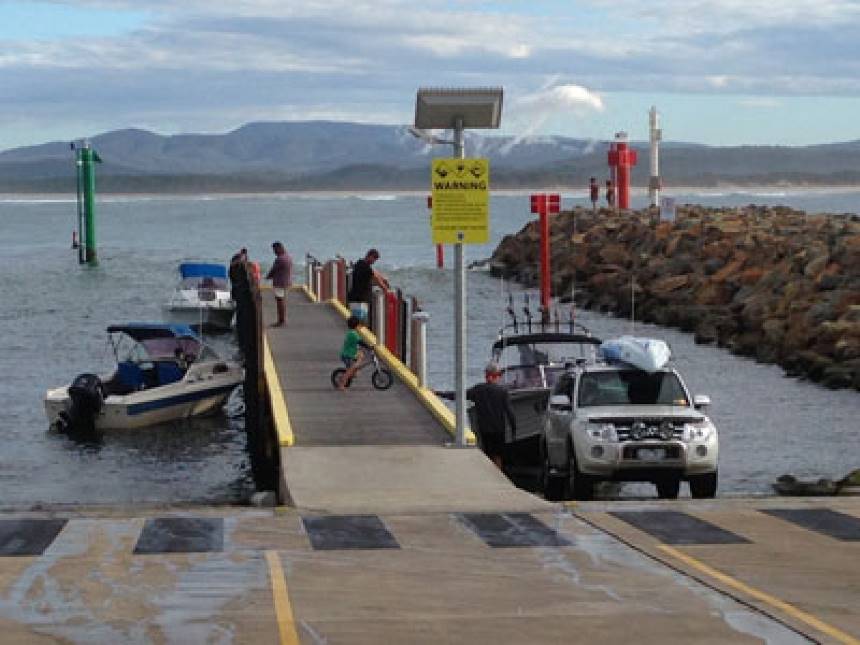
Safety Considerations:
Wear a PFD (lifejacket) at all times.
Be cautious of tidal changes and wind conditions.
Ensure your kayak is equipped with necessary safety gear.
Regulations & Licencing:
A valid Victorian Recreational Fishing Licence is required unless exempt.
Check for specific bag and size limits for each species.
Port Phillip Bay is Victoria’s most iconic fishery—spanning over 1,900 km², it offers a wide range of kayak-friendly locations from shallow estuarine zones to deep reef systems. Unlike the more turbulent Western Port, Port Phillip is generally calmer, especially in its inner bay areas, making it a favorite among beginner and intermediate kayak anglers.
The bay's relatively shallow profile, combined with extensive weed beds, reef systems, sandy bottoms, and access points close to Melbourne, makes it incredibly versatile. Whether you're chasing snapper during the spring run, casting squid jigs around Sorrento, or hunting flathead along the southern flats, Port Phillip has something for every style of kayak fishing.
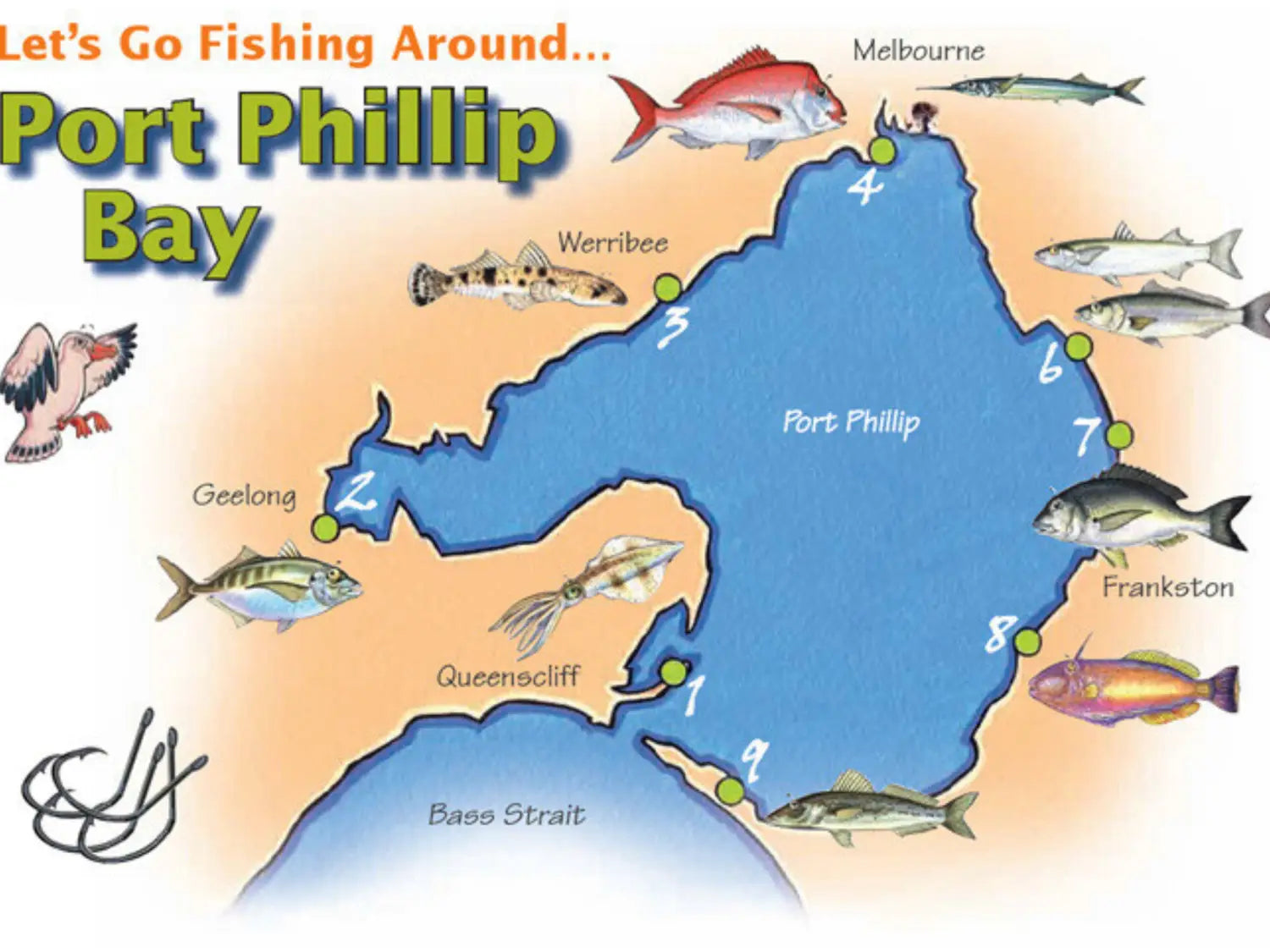
Species to Target:
Snapper
Flathead
Squid (Southern Calamari)
King George Whiting
Australian Salmon
Garfish (especially in calm, sheltered zones)

Fishing Tips:
Snapper Tactics-
Best times are dawn, dusk, and tide changes.
Target drop-offs, reef edges, and rubble grounds using a running sinker rig baited with pilchards, silver whiting, or squid.
Soft plastics and slow-jigging can also be productive in shallower areas, especially during overcast days.
Top spots include Carrum, Black Rock, Altona, and Mornington reefs.
Squid Grounds-
Focus around weed beds and broken reef near Rye, Sorrento, and Queenscliff.
Use size 2.5 to 3.5 squid jigs in natural, white, or UV colors.
Ideal conditions: clear water and light wind during early morning or evening.
Whiting Approach-
Drift over sandy patches near weed beds using pippies, mussels, or squid strips on a paternoster rig.
Use light gear for finesse—sensitive rods help detect subtle bites.
Try Portsea, Clifton Springs, and Corio Bay.
Salmon Blitz-
Look for birds working and surface boils. Cast metal slugs or small stickbaits on fast retrieve.
Good areas: Frankston Pier, Indented Head, and Altona.
Flathead Tactics-
Drift over sandy or muddy flats, casting soft plastics or prawns on light jigheads.
Best areas include St Leonards, Werribee South, and Mornington.
Kayak Tech Tip:
If you’re heading out into deeper areas (especially for snapper or squid), a sounder/fish finder will massively boost your efficiency. Use it to locate bait schools, drop-offs, and productive reef zones.
Kayak Launch Points:
Mornington – Easy access to reef systems, suitable for squid and snapper
Altona – Sheltered shallows and mixed reef/sand patches, great for beginners
St Kilda – Close to Melbourne, good for garfish, squid, and pinkies
Carrum – Launch to deeper snapper waters with access to artificial reefs
Queenscliff & Sorrento – Access to deeper channels and prime squid areas
Werribee South – Estuarine fishing and access to flathead grounds
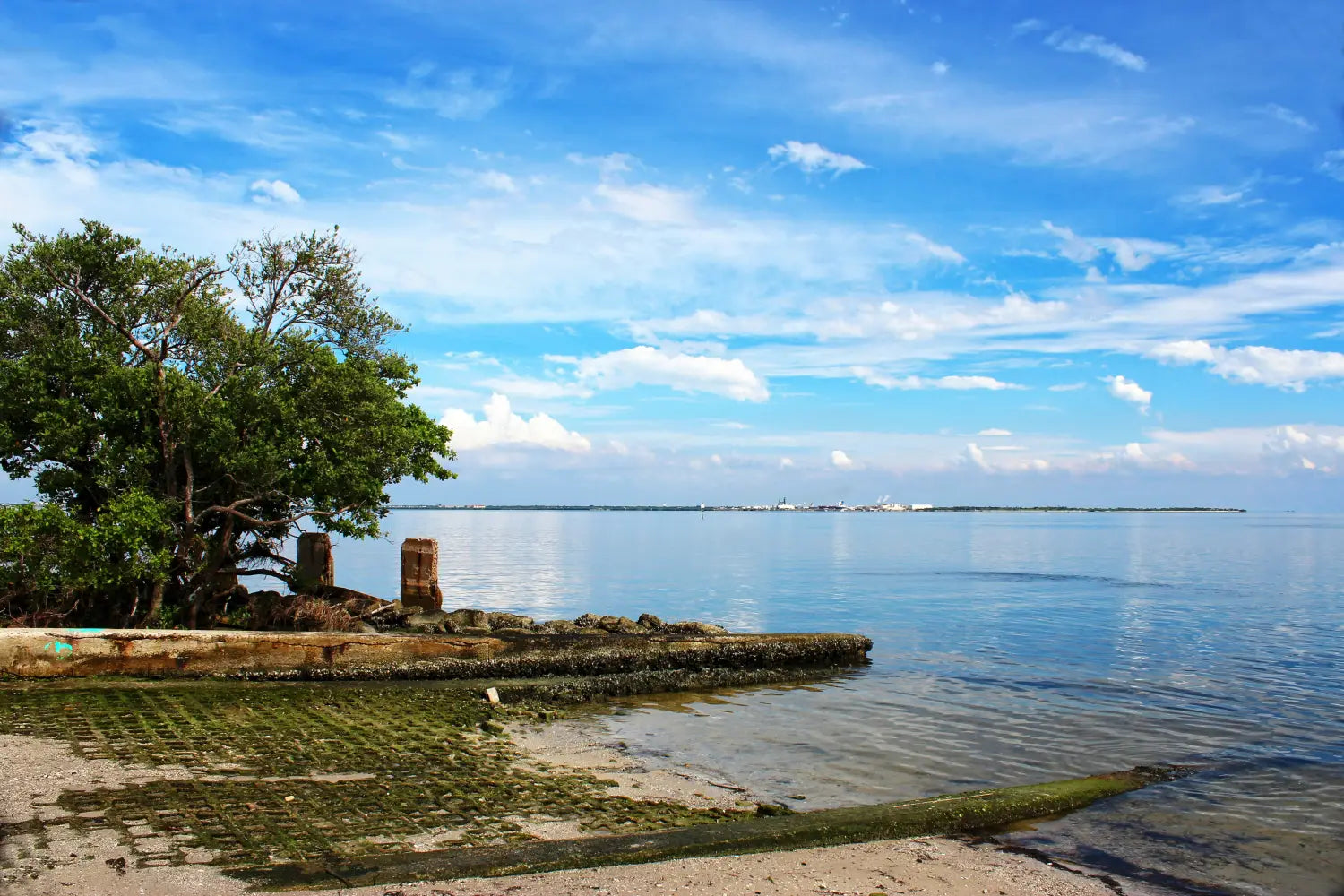
💡 Pro Tip: Launch early in the day to beat wind chop. The bay often glasses off in the morning, with winds picking up after 11 a.m., especially in summer.
Water & Weather Conditions:
Port Phillip is generally more forgiving than Western Port but can still turn quickly.
Watch for strong southerlies—these can create short, steep chop, especially on exposed sections like the Mornington Peninsula.
The inner west (Altona, Williamstown) tends to stay calmer and is more beginner-friendly.
Safety Considerations:
Always wear a PFD (lifejacket)
Fly a bright kayak flag to stay visible to boaters
Carry a marine radio or mobile in a waterproof case
Use apps like WillyWeather or Seabreeze to monitor wind and tide conditions
Avoid busy boat ramps or main boating channels during peak periods
Regulations & Licencing:
A valid Victorian Recreational Fishing Licence is required unless exempt
Be aware of seasonal snapper closures, size/bag limits, and protected species
Check the Victorian Fisheries Authority for up-to-date regulations
Why Port Phillip Rocks:
Port Phillip Bay is arguably the most accessible and varied fishery for kayak anglers in Victoria. You can be catching garfish on ultralight gear in the morning and pulling in 5kg snapper by afternoon. With so many launch options and habitats, it's a waterway that rewards exploration—and offers endless room to level up your skills.
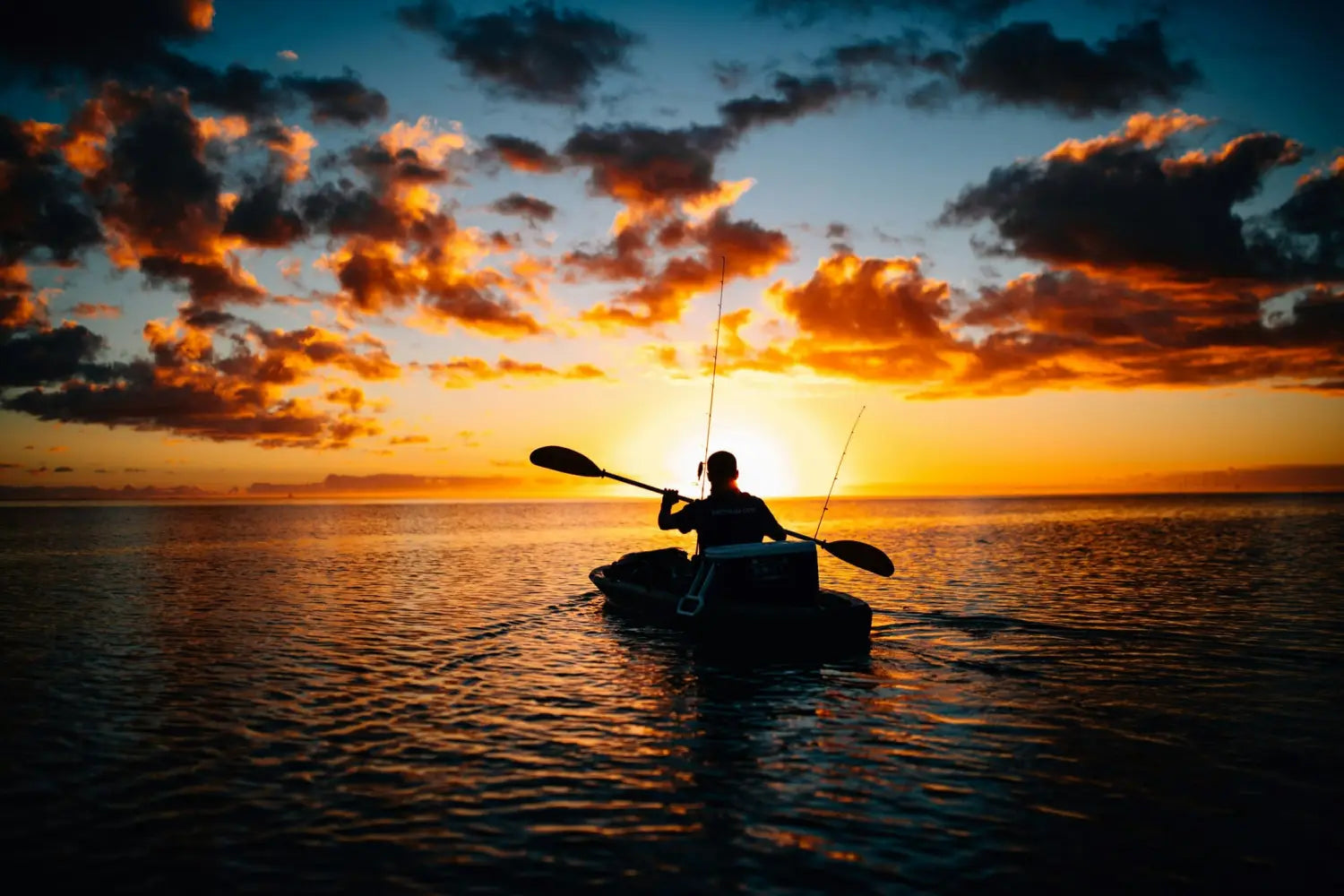
Kayak fishing in Victoria is more than just a way to catch fish—it's about connecting with the water, enjoying nature, and exploring places you just can’t reach on foot or from a boat ramp. Whether you're drifting over the flats of Lake Tyers or hunting snapper in Port Phillip Bay, each location offers its own unique experience.
From beginner-friendly estuaries to challenging deepwater bays, these five spots give you a taste of the best Victoria has to offer. Just remember to always check weather and tides, pack safety gear, and follow all fishing regulations. Respect the water, the fish, and your fellow anglers—and the rewards will follow.
Tight lines, safe paddling, and we’ll see you out there on the water.
References/Acknowledgements:
https://www.fishing-victoria.com
https://www.blackmagictackle.com/fishing-guides/melbourne-fishing-spots
https://www.seabreeze.com.au/
https://eastcoastkayaking.com.au/
https://www.g-mwater.com.au/
http://www.laketyersbeach.net.au/groups/LTBAC.htm
https://vfa.vic.gov.au/
Leave a comment